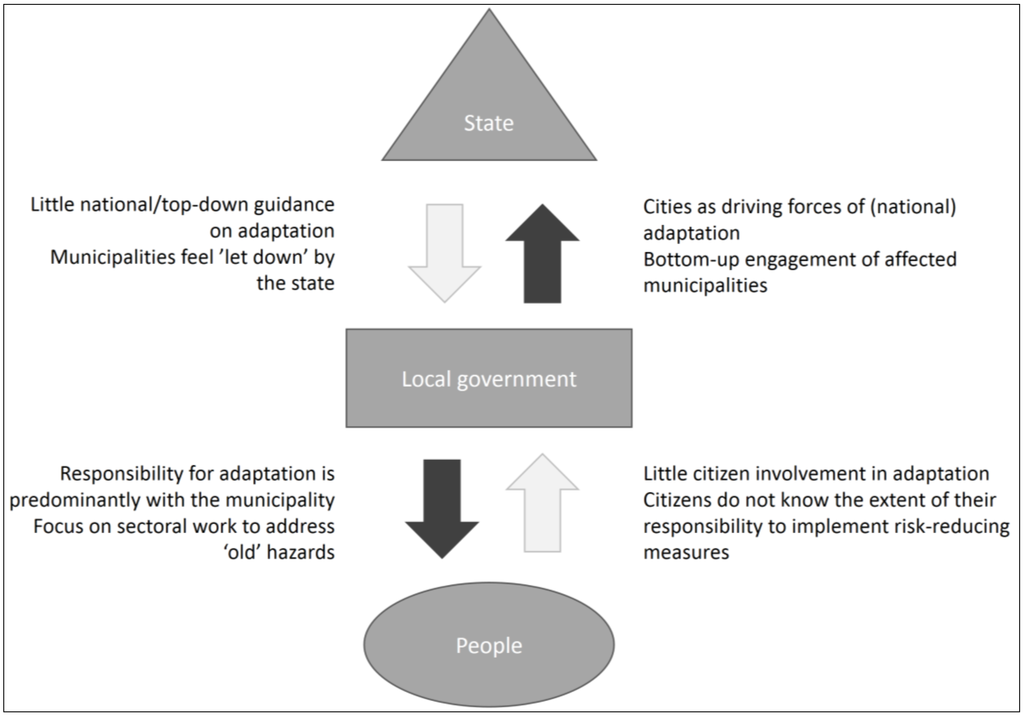Climate In Review Sustainability Strategies
Post on: 16 Март, 2015 No Comment

Book Review: Sustainability Strategies
Review of: Sustainability Strategies. When Does it Pay to be Green? By Dr. Renato J. Orsato, Palgrave Macmillan, July 2009.
Dr. Renato J. Orsato is Senior Research Fellow at INSEAD Social Innovation Centre, France. He has been a researcher, educator, and consultant for the past 15 years.
Review by David L. Levy
From time to time I’ll be reviewing books related to business and climate change that might be useful for academics and businesspeople. There are quite a few more general books on environmental management and business sustainability (Stead and Stead’s Management for a Small Planet is a classic, now in its 3 rd edition). However, there are very few books that focus on climate change right now, though this market is likely to take off as climate change goes mainstream in business and colleges offer more courses on the subject.
Dr. Orsato’s Sustainability Strategies. When Does it Pay to be Green? is not about climate change per se. but its focus on business strategy was intriguing and close to my own interests. The frameworks offered are directly applicable to clean energy markets, and there is a chapter on eco-efficiency, with a section on carbon credits, and a chapter with an extended discussion of the auto industry.
Too many writers gush effusively about the profits to be made by being green. While preaching about “win-win” opportunities has served a useful role in creating a positive, even enthusiastic attitude toward clean energy investments among some businesspeople, investors, and policymakers, it does not always make for sharp, critical analysis. Dr. Orsato makes clear in the first chapter of his refreshingly cogent and dispassionate book that it’s not easy being green. There is always some low-lying fruit around, but once the easy picking is gone, the hard task is to craft a longer term sustainable strategy that has both economic and environmental benefits. Orsato observes “the scope for win-win scenarios is narrower than many wish them to be. Out of the vast array of actions taken by firms, only a few will be profitable, generate competitive advantage or create new market spaces.”
Managers have to take strategy seriously if they want to pursue green goals, as it can be difficult to appropriate or “monetize” public benefits, and competition can quickly erode competitive advantages. Orsato illustrates this point with a mini-case on how Tetra Pak tried to increase the recyclability of its retail drinks containers, which contain many thin layers of different materials, from metals to plastics and paper. The problem was that neither its direct customers, large food and drinks companies, nor final consumers are very concerned about recycling issues. Tetra was only able to justify its investment in expensive plasma technology based on the value of the aluminum it could extract and recycle.
Strategy is about finding, exploiting, and defending sources of competitive advantage. Orsato gives us a brief review of the two major concepts of strategy, Porter’s positioning school and the Resource Based View (RBV). For Porter, competitive advantage (i.e. above normal profits, or economic rents) derives from marketplace positioning, in terms of pricing, branding, and product features. To endure over time, this competitive advantage would have to be protected by market structures such as barriers to entry or economies of scale. From this perspective, a number of firms in the same sector or business cluster can enjoy above normal profits. The RBV, by contrast, sees competitive advantage more as a firm-level package of unique resources and capabilities that take a long time to acquire and are difficult to copy. This perspective emphasizes internal processes and organizational competencies rather than external market structures.
Orsato draws from both schools of strategy to give a framework for thinking about sustainability strategy, a classic business-school 22 matrix for competing in existing markets. Orsato also offers a fifth strategy, the Blue Ocean or Sustainable Value Innovation (SVI) boldly go where no business has gone before approach. The book is structured around five chapters that go into more detail for each strategy.
Orsato is wary of the first strategy, eco-efficiency based on lowering costs in internal operations. He notes that efficient management of costs and risks is really a part of operational effectiveness, not strategy. Everyone will soon be doing it, so it becomes a license to operate rather than a longer term source of value. I would point out, however, that companies like Walmart and Toyota have developed long term strategic advantages from their systemic “lean production” approach to reducing costs (and improving logistics, quality). In metals, chemicals, cement, and other industries there is probably room for reducing energy and materials costs based on proprietary technologies and processes.
The chapter on Beyond Compliance strategies delves into how companies can spin their investments in greening internal processes into external reputational advantage. Orsato suggests that businesses can do this by joining Green Clubs, for example, signing up to voluntary industry/NGO standards such as GRI, ISO14000, CDP, or joining a more exclusive club such as Ceres’ BICEP or Pew’s BELC. Firms can reap value in terms of brand and reputation, as well as influencing standards and regulations, though Orsato suggests that the primary value is defensive, in deflecting criticism and antagonistic campaigns, and deterring regulation. For a more detailed view of Green Clubs, I’d recommend The Voluntary Environmentalists by Aseem Prakesh and Matthew Potoski. They discuss, for example, how club joiners might be the dirtiest companies looking to gain a free ride from club membership, or clean companies looking for recognition but without new commitments.

Eco-branding, the third strategy, is based on differentiation in the final product market. The chapter dwells on various types of eco-labels, such as the FSC labels on wood products or carbon labels, though Orsato acknowledges that there are significant methodological problems in developing reliable and meaningful labels, and consumers are confused or indifferent. Stephen Stokes has similarly argued in Sticker Shock that developing these labels can be extremely expensive, add little value for consumers, and not be the best source of process-level information for management to cut costs (back to strategy 1). In general, Stokes points out that it’s hard to build green brands at the product level, aside from notable exceptions such as Toyota’s Prius.
A significant gap in this chapter is that there is little discussion of differentiation strategies for products with obvious green credentials, from hybrid cars to compact fluorescent bulbs to advanced batteries. A123’s recent very successful IPO points to the capital market premium currently available for well differentiated products in the low-carbon space, though the long-term leadership of lithium batteries for storage, and of any particular lithium company, is highly questionable. Tom Konrad has written one of the best analyses of the storage sector one of the best analyses of the storage sector explaining his skepticism. My point here is that serious strategic analysis at the sector or company level requires very detailed consideration of technologies, costs, regulations, commercialization trajectories, and other factors. The strategic frameworks in Orsato’s book are a useful starting point, but are too generic for investors and industry specialists.
The chapter on environmental cost leadership discusses, amongst other examples, how Brazilian biofuels have established a strategic advantage over corn-based ethanol, though their exclusion from the US market by tariff barriers should probably have received more attention as a demonstration of the importance of non-market strategy. Similarly, Boeing and Airbus are competing to provide the lowest operating cost planes to airlines, though contracts are frequently influenced by national political factors.
The most provocative chapter is that on Blue Ocean strategies, or what Orsato terms Sustainable Value Innovation (SVI) in a rare spasm of consultantspeak. The point of SVI is to avoid competition by sailing into clear blue ocean, entirely new market spaces. For Orsato, SVI redefines the boundaries of an industry, often crossing public-private lines. It’s a systems-level strategy that “requires changes in both the nature and technology of products and in the logic by which systems of production and consumption are organized.” Sounds like a very tall order, and indeed it is.
Within the context of a case study of the auto industry, Orsato illustrates the concept by arguing that the three main current paths to low-carbon transportation, small light cars, biofuels, and hybrids, are not SVI. They represent marginal, incremental improvements to products that compete within the same parameters as existing products. Instead, Orsato examines SVI using the examples of Zipcar, Velib cycles, and Shai Agassi’s Better Place project to provide a replaceable battery infrastructure for pure electric vehicles. These companies provide mobility services and leverage government to overcome system level obstacles. For consumers who might balk at the high cost of EV cars, a battery leasing service packaged with a regional information system to assist drivers could represent a market transformation, and one with built in barriers to entry to protect the first mover. While these ventures clearly represent radical restructuring of markets, I suspect that these opportunities are very few, and that blue oceans can be infested with sharks. And where is there really any market space devoid of competition? Consumers will still compare the price and convenience of Velib versus the metro, Zipcar versus car ownership.
Overall, I found the book reasonably well written and accessible, without too much jargon, and the case studies are well chosen. It provides useful frameworks, but is far from a “how to” manual. The grounding in strategy provides a firm basis for the frameworks offered in the book, though I was looking for a deeper and more extended discussion of strategic insights in relation to clean energy. For example, auto companies struggling with the question of how much to invest in hybrids and EVs have to consider not just the marketplace but the extent to which their own “core competencies” lie in vehicle, design, and assembly, and not just a specific drivechain modality. Similarly, the RBV school of strategy suggests that oil companies might find that their core competencies extend better to biofuels than wind or solar, explaining the recent pullback by BP and Shell (see Back to Petroleum? ). Nevertheless, there is no clear answer to the question of whether oil companies can, in fact, develop new competencies in clean energy over years of investment and organic growth, or whether they should wait, as Exxon seems to be doing, for technology risk to decline and then seek to acquire clean energy assets in the capital markets. In the meantime, this is one of the best books available on strategic management of sustainability.














